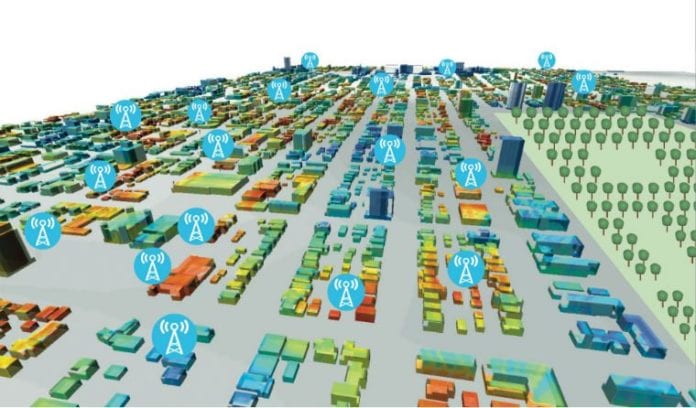Millimeter wave spectrum bands are shaping up to be a key component of 5G fixed wireless deployment plans.
Editor’s Note: In an attempt to broaden our interaction with our readers we have created this Reader Forum for those with something meaningful to say to the wireless industry. We want to keep this as open as possible, but we maintain some editorial control to keep it free of commercials or attacks.
Cable and incumbent local exchange carrier operators are mulling a significant shift in how they deliver broadband connectivity to the residential end user, as Strategy Analytics forecasts that almost half of all homes in the United States will have a 4K television by 2020.
While 3D television largely fizzled soon after hitting the market, ultra-high definition television or 4K UHDTV seems to be the new standard technology for high definition. This tech employs screen resolutions of 3,840 pixels wide by 2,160 pixels tall (8.29 megapixels) – or four times as many pixels as the traditional 1920 × 1080 for existing HD television. As a result, the optimal bandwidth for 4K television is higher than 20 megabits per second.
Most of today’s incumbent’s broadband networks were not designed to deliver 4K capacity to the home. These operators must determine if the costs to deliver fiber to the home can be undercut by a reliable fixed-wireless access approach, potentially through high-bandwidth “5G” services.
Some consider 5G a telecommunications standard in search of a killer application. Expectations for 5G include delivery of greater capacity with improved latency and reliability to meet requirements of all users – both human and machine-to-machine. One way these capacity improvements will be delivered is through the use of “millimeter wave” frequencies of up to 100 GHz – much higher than those used for today’s 2G through 4G wireless networks – which aren’t in use today.
Operators looking to deliver broadband connectivity to the home in support of 4K TV and related internet services are investigating 5G as a last-mile connectivity solution. A 5G-capable RF planning platform provides the answer to the critical feasibility assessments for elements of the new standard that are already known in the ecosystem today. Any operator trying to determine if they have to connect fiber to the home should also perform a wireless assessment on RF planning software to see if 5G provides a viable option.
Operators trying to determine the most efficient – and economical – way to deploy a network capable of delivering high-bandwidth internet or television need to weigh the pros and cons of each alternative for last mile connectivity. Fiber-to-the-home also has a number of prohibitive costs associated with it, including:
• The expense of buying, burying and installing equipment like conduit and handholes (the below-ground fiber splicing enclosures that can be reached by technicians) can increase the overall cost of an FTTH project.
• Network tap fees, where those deploying fiber access the home via an existing utility connection (typically hydro or sewer).
• The need to buildout a large part of the network in advance of a single customer addition.
• The requirement to provision each customer manually (i.e., a truck roll prior to startup).
While 5G may hold many question marks, the range of frequencies in the millimeter bands are well known. Some of the technologies employed are also well understood by the wireless ecosystem, including the use of beamforming antenna technologies to maximize signal levels on these frequencies where attenuation properties are pronounced due to atmospheric conditions, foliage and rain fade. A wireless planning application that can model these propagation phenomena accurately is a critical input to assessments of 5G’s potential as a fixed wireless last mile access technology.
Millimeter wave RF planning can let an operator perform an investment case and staged deployment plan. In combination with a geographic information system, RF prediction values can be inserted over any type of existing customer, demographic or prospect segmentation criteria. Network rollouts can be staged to address the most likely subscribers, as well as those with easiest connectivity to the existing network.
Operators investigating the business case for fixed wireless access using 5G as the underlying radio technology can use RF planning software to determine accurate “network build” site counts to use in business case analyses; determine coverage thresholds achievable based on existing sites, potential sites (i.e., candidate sites) or new build sites; dimension a network capable of delivery to critical thresholds; and establish search rings for site acquisition activities.
Cable/MSO and ILEC operators assessing if fiber or 5G fixed wireless access provides their best option for network capacity upgrades will need to work on their investment case in advance of any deployment. Operators should perform 5G wireless assessments now on RF planning software capable of this undertaking. It should be noted that not all RF planning software currently support 5G millimeter wave planning given the current standards progression. As a result, an RF planning solution capable of the known elements of 5G can provide a key strategic input to this investment case and geospatial insight for this significant network upgrade.

